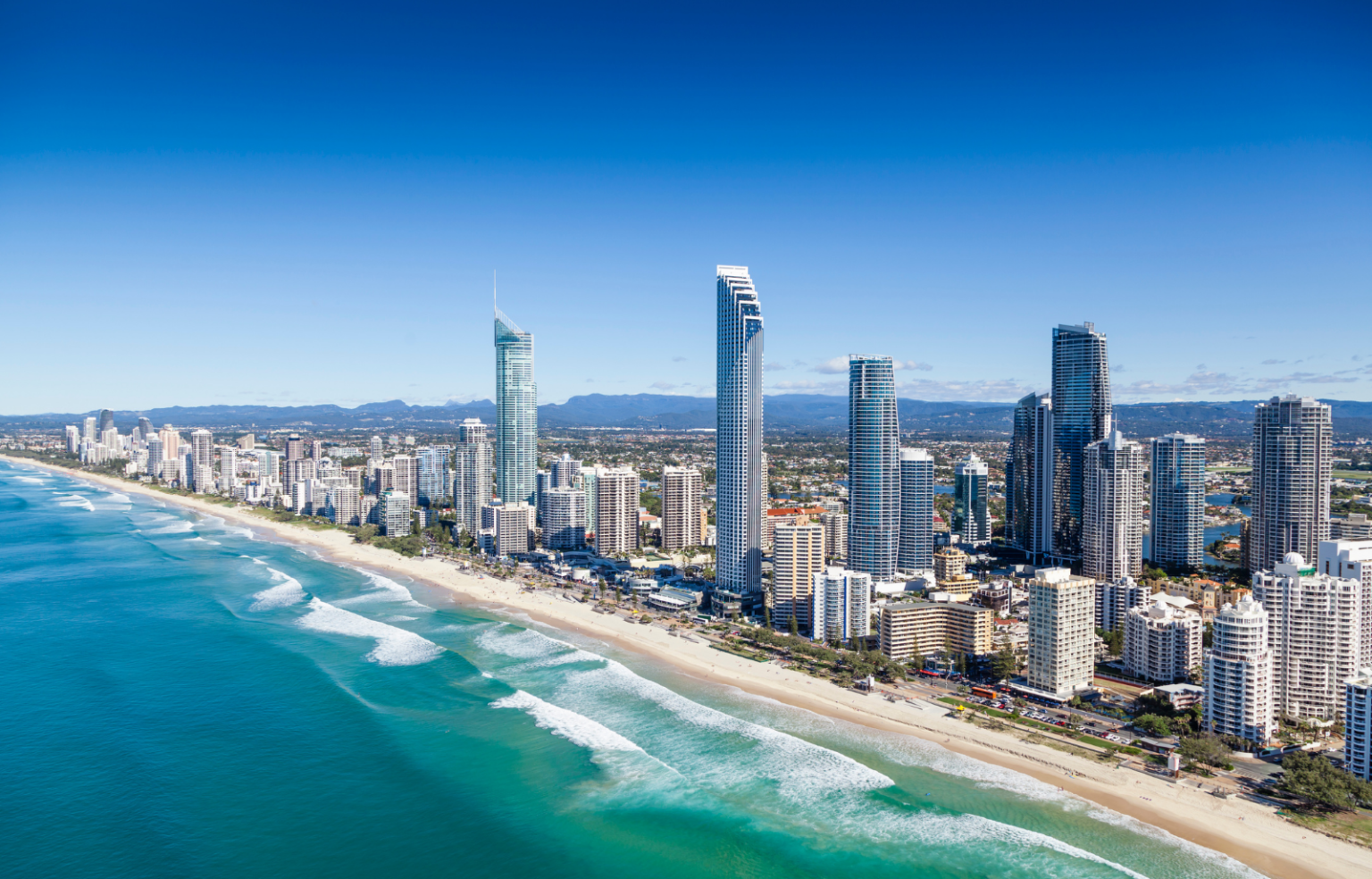People all throughout the world are working longer hours and taking fewer vacations, posing a variety of mental and physical health risks. When work becomes too much for you and your work-life balance is off, it’s time to ask yourself, “Should I go on vacation? One of the most satisfying experiences a person may have in their lifetime is travelling. There are so many different places to see and things to do that it can be difficult to plan the perfect getaway. If you are planning on a perfect getaway, you should try to visit Australia.
Australia is a vast and diverse country, offering tourists plenty of interesting places to visit. Depending on your interests, you could explore the bustling city streets of Sydney, get lost in the ancient rainforest trails of Daintree National Park, go wine-tasting and on winery tours in the stunning Gold Coast, see Australian animals up close at Magnetic Island Zoo, or take a scenic drive along the world-famous Great Ocean Road.
No matter what you choose to do, you’re sure to have an amazing time down under! There are many tourist places in Australia that you should visit, and you don’t need to worry about your travel accommodations because all over Australia you will find a great deal for that. We list the top tourist attractions in Australia that are a must for anyone looking to explore this amazing country.
Kangaroo Island
Kangaroo Island is Australia’s third-largest island, behind Tasmania and Melville Island. It is located 112 kilometres (70 miles) southwest of Adelaide in the Australian state of South Australia. Snapper Point in Backstairs Passage, 13.5 kilometres (8.4 mi) from the Fleurieu Peninsula, is the nearest point to the mainland.
The island is 145 kilometres (90 miles) long from west to east and 0.94 to 54 kilometres (1 to 34 miles) wide from north to south. It has a total area of 4,405 km2 (1,701 sq mi). Its shoreline stretches about 540 kilometres (336 miles), with the highest point reaching 307 meters (1007 feet) in Flinders Chase National Park, west of the Playford and West End Highways. At 299 metres (981 feet) above sea level, Mount MacDonnell is the second-highest mountain on the peninsula, divided from the Yorke Peninsula to the northwest by Investigator Strait, and Backstairs Passage connects the Fleurieu Peninsula to the northeast. The Pages are a collection of islets off the island’s eastern coast.
Wildlife encounters are pretty much an inevitability at this “Zoo Without Fences.” However, if you need to be certain that you locate what you’re searching for in a short amount of time, it’s ideal to tour with someone who knows just where to look. Many species of birds, as well as kangaroos, sea lions, koalas, echidnas, wallabies, goannas, and marine mammals, can be found. Kangaroo Island never disappoints when it comes to fauna.
Many individuals, though, come here to reconnect. Slow down and rediscover the things that are really important in life by reconnecting with nature and each other. The island beaches will astound you, their treks and hikes will take your breath away, their fishing will take your breath away, and we are sure that the experiences you will have here will be unforgettable. Kangaroo Island and its people will seize your heart and refuse to let go.
The Great Ocean Road
The Great Ocean Road is a stunning 240-kilometre (150 mile) stretch of road that runs along Australia’s southeastern coast, connecting the Victorian cities of Torquay and Allansford. This famous war monument was built by returned troops between 1919 and 1932 to honour soldiers who lost their lives in World War I. It also reminds us how important peace can be because this area has been through so much violence before we even started fighting overseas conflicts like Vietnam or Iraq. The route allows access to several notable attractions, including the Twelve Apostles limestone stack formations right next door at Bayview Farm Park.
There are literally hundreds of bay and ocean beaches to choose from, from Torquay to Portland and beyond, and they are all beautiful all year round. They provide a pleasant getaway in the summer and a beautiful setting to behold with large swells in the winter. Beautiful lakes and rivers can also be found along with the Great Ocean Road Region. Each has its own history and recreational activities.
Waterfalls, lookouts, renowned seaside vistas, and volcanic plains are all accessible via trails. The Great Ocean Road region’s rich landscape is simply waiting to be discovered. The entire Great Ocean Road region is a natural for waterfalls due to its varied terrain and coastal fringe. Typically, they provide shady relief from hot summer days as well as pedestrian access through forest environments teeming with wildlife sights and sounds. Look for koalas, echidnas, wallabies, strange mushrooms, wildflowers, and native birds. Also, every year, 25 distinct species of migrating whales visit the coast, including Southern Right Whales, Humpback Whales, Blue Whales, and Orcas.
Gold Coast
The Gold Coast is an Australian coastal city located about 66 kilometres (41 miles) south-southeast of the state capital, Brisbane and just north across New South Wales’ border. The Gold Coast, with its sunny, subtropical environment, is a popular tourist destination noted for its world-class surfing beaches, high-rise skyline, amusement parks, nightlife, and rainforest hinterland. With television shows and a thriving film industry, the city contributes to the country’s entertainment sector.

The Gold Coast’s attractions offer a broad spectrum of interactive entertainment, from glittering, large-budget Gold Coast theme parks to small, hilariously kitsch museums, with adrenaline rides, exotic animals, and on sweltering summer days, endless waterslides will keep you cool. Theme parks rise from the sand and water, giving the Gold Coast a world-renowned child cred. Jump into charming, cuddly, and raging wildlife encounters; planets made specifically for bouncers; and ice creameries serving sugar highs from every nook and cranny. They have a wingman to scale sky-high buildings or zip-line through ancient rainforests.
If you’re looking for some action and adventure, whether it’s a surf lesson at one of the city’s best beaches or a high ropes course, this is the place to go. They also have a go-karting area, wake park, indoor and outdoor skydiving, ice skating rink, golf course, outdoor paintball field with a military vibe, bike parks, and tracks. You can also find here Australia’s Largest Inflatable Obstacle Course – The Tuff Nutterz.
Great Barrier Reef
The Great Barrier Reef, being the world’s largest coral reef ecosystem, is a globally significant and exceptional entity. In 1981, the entire ecosystem was declared a UNESCO World Heritage Site, covering 348,000 square kilometres and spanning a contiguous latitudinal range. The Great Barrier Reef stretches from the low water mark along the mainland coast to 250 kilometres offshore, with substantial cross-shelf diversity. This huge depth range encompasses vast shallow inshore areas, mid-shelf, and outer reefs, and oceanic waters exceeding 2,000 metres deep outside the continental shelf.
Within the GBR, there are about 900 islands and 2,500 distinct reefs of all sizes and shapes, ranging from little sandy cays and bigger forested cays to massive craggy continental islands, reaching over 1,100 metres above sea level in one instance. These landscapes and seascapes combine to create some of the most breathtaking marine scenery on the planet.

Over 3000 unique reef systems and coral cays, as well as hundreds of charming tropical islands with some of the world’s most beautiful sun-soaked, golden beaches, make up the reef. There is an abundance of aquatic life in this area. The Great Barrier Reef has become one of the world’s most popular tourist destinations due to its natural beauty. Visitors to the Great Barrier Reef can participate in a variety of activities such as snorkelling, scuba diving, aircraft or helicopter tours, bare boats (self-sail), glass-bottomed boat viewing, semi-submersibles, as well as educational excursions, cruise ship cruises, whale watching, and dolphin swimming.
Where to Stay?
Now that you have some insights on where you should go or visit, the next thing is where to stay. Like we told you earlier, there are plenty of travel accommodation offers in each place we tackle. It is best to search for the right packages or offers before going to these places. Of course, when searching for travel accommodations, you need to consider your budget, how long you will be in the area to enjoy the scenery and activities, and how many people will be with you. It is easy when you are solo, but if you have friends and family with you, it is advisable to get a group or family getaway accommodation package.
There are so many places to visit in Australia that we can only tackle four of those. If you’ve got some holiday time, or are just visiting, look at the different spots and contexts of each one and plan your next trip. Planning a getaway vacation is not that easy, but when you are there, all of the planning is worth it.



